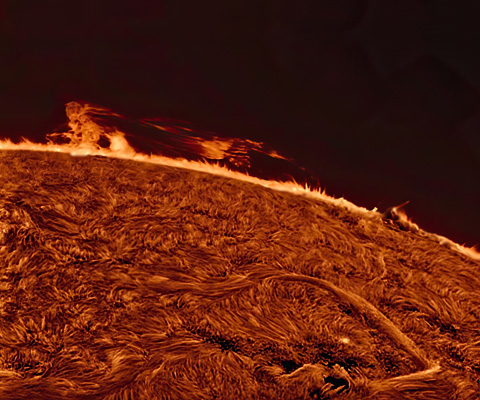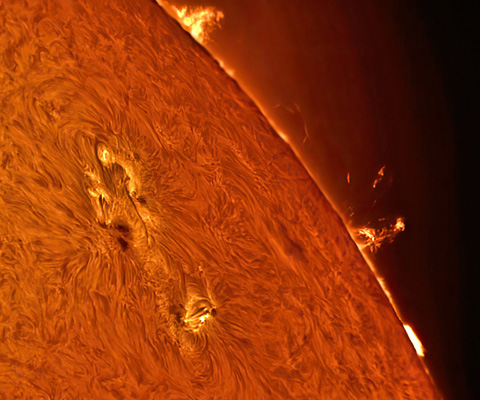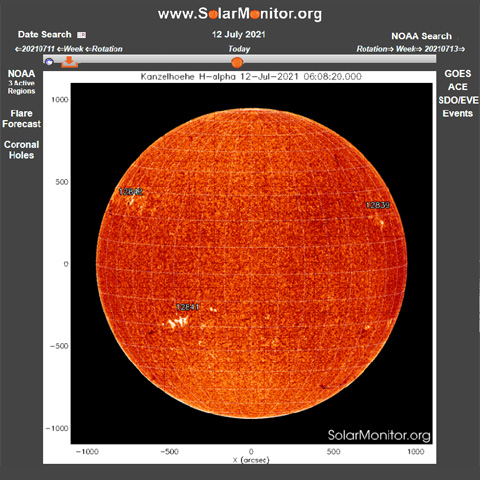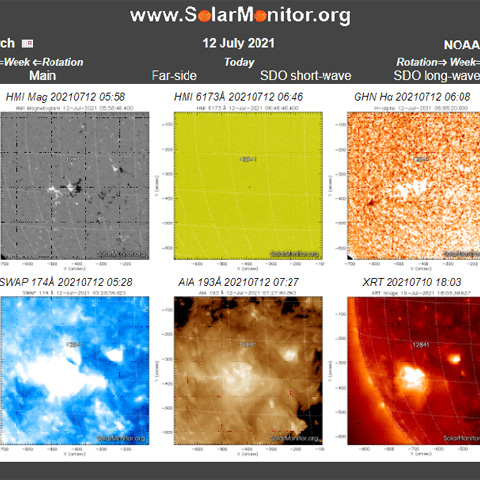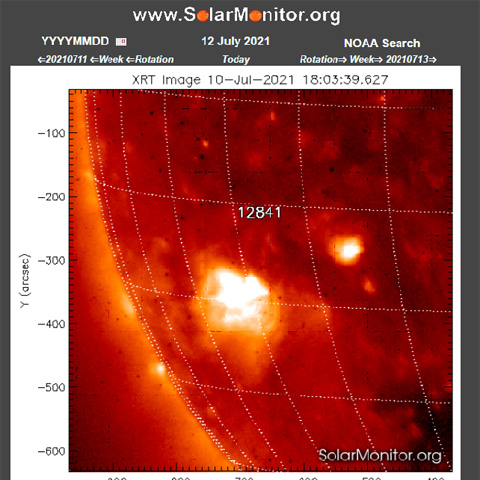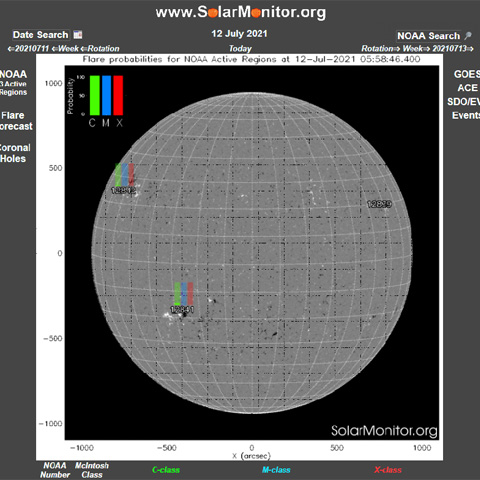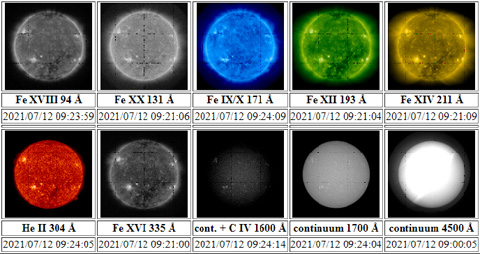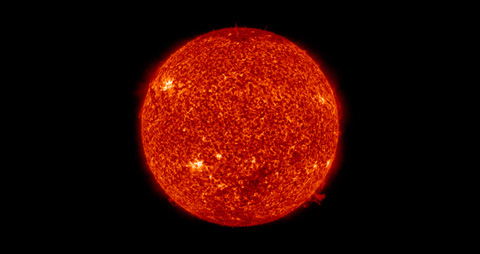Caution:
A dedicated solar telescope, such as the Coronado PST and SolarMax, is required to observe the sun directly.
Otherwise, staring at the Sun without dedicated equipment may result in eye damage or blindness.
Introduction
The Sun is a 4.6 billion years old star of hot plasma located at the centre of the Solar System.
The Sun spins round itself but being a gas giant, it rotates once every 24 days round the equator where it will take more than 35 days for a full rotation near it poles.
It is heated by nuclear fusion reactions in its core, radiating energy primarily in the visible spectrum and also infrared wavelengths both of which can observed with appropriate equipment.
The Sun is understood as consisting of succeeding layers starting with the core at its centre i.e., Core, Radiative zone, Tachocline, Convective zone, Photosphere and Atmosphere.
Where the Sun’s atmosphere is visible during an eclipse, the Photosphere can be readily observed in the visible light including Ha with the correct equipment and taking the necessary precautions to avoid damage to one’s eyes and equipment.
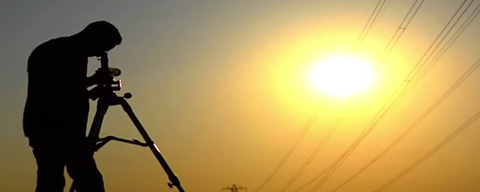
Observing the Sun.
The Sun consists mainly of hydrogen (~73%) and fuses around 600 million tons of hydrogen into helium per second converting approximately 4 million tons of matter into energy at the same time. Otherwise, the Sun consists of Helium (~25%) with small quantities of other elements including carbon, neon, iron and oxygen.
The effects of Solar activity affect the weather on and around Earth, include auroras and radio communication and electric power disruptions.
Observing the Sun's photosphere
The Photosphere that is the only layer that can be observed does not have a clearly defined surface since the Sun is a gaseous and highly dynamic object. This is a result of the Sun’s magnetic fields that lead to what we perceive as solar activity and include Solar flares and coronal-mass ejections that typically occur at sunspot clusters.
These slowly changing high-speed streams of solar wind carrying plasma and coronal holes at the photospheric surface can be observed in Ha using a Solar Scope like the Coronado PST and SolarMax III, a rewarding experience that can be enjoyed during social hours by both casual observers and seasoned enthusiasts.
Visual observation & imaging conditions
There are several factors that will affect the quality of the image through any Solar scope and it is therefore important being aware of them since some can be mitigated to an extent.
Image by Gary Palmer, United Kingdom. Captured with a Coronado SolarMax 90 Double Stack solar telescope.
Image by Gary Palmer, United Kingdom. Captured with a Coronado SolarMax 90 Double Stack solar telescope.
High levels of humidity and air-borne dust will affect the quality of the image, especially when the Sun is lower in the sky. Also, haze and thin clouds will soften the image and sometimes can have a dramatic effect.
Observing in late morning, say between 10:00am and 12:00pm, is preferable to doing so in the late afternoon. As the ground heats up, it radiates heat as do the roofs of building so, make certain your line of sight does not pass just over a building.
Information sources
Planning a session in advance is important due to the dynamic nature of the Sun and the fact that features would come in and out of view within hours as the Sun spins round itself.
There are several on-line sources that will provide near real-time information on the Sun’s activity that will help to plan a session. Some of these are listed below.
SolarMonitor
Solar Monitor offers images and information on the Sun’s active regions and solar activity from the Global H-alpha Network, Solar & Heliospheric Observatory (SOHO), GONG+, and the National Oceanic & Atmospheric Administration (NOAA).
You can browse the SolarMonitor website from the Links section below.
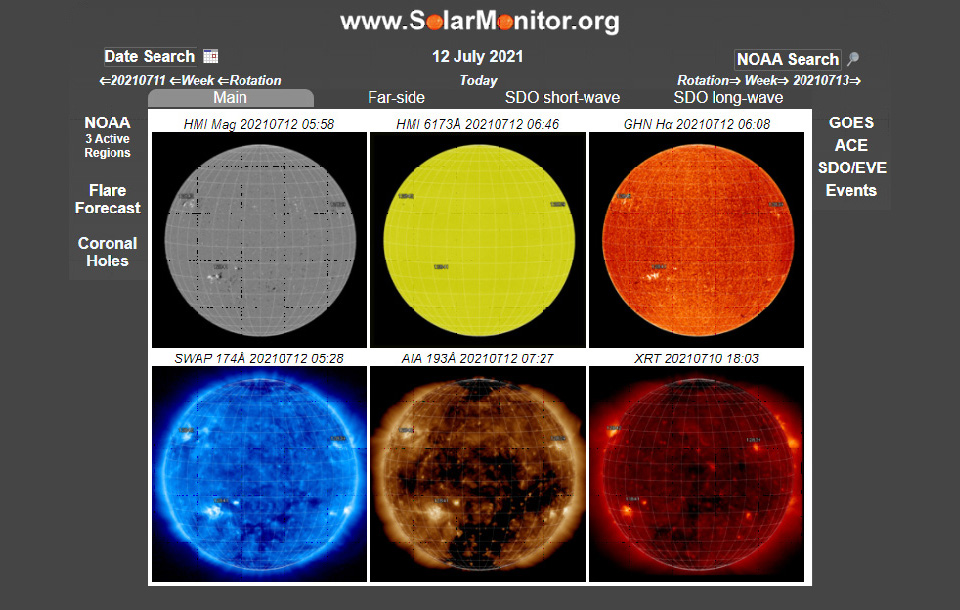
SolarMonitor.
NASA
NASA’s images of the Sun showing Solar activity and links to related resources.
You can browse the NASA website from the Links section below.
JHelioViewer
JHelioviewer provides on-line tools for the visualization of Solar and heliospheric data.
You can browse the JHelioViewer website from the Links section below.
SOHO
The Solar & Heliospheric Observatory (SOHO) spacecraft orbiting the Sun carries 12 instruments to capture images at different wavelengths from ultraviolet to visible including Ha.
These are published and can be viewed on the SOHO website. You can browse the SOHO website from the Links section below.
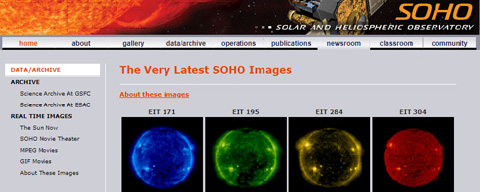
The Solar & Heliospheric Observatory (SOHO).
Related topics:
how-to guide, solar


